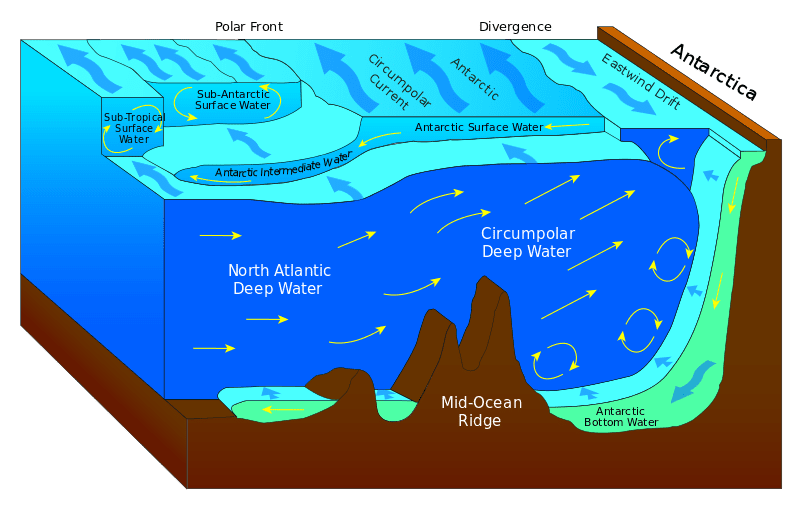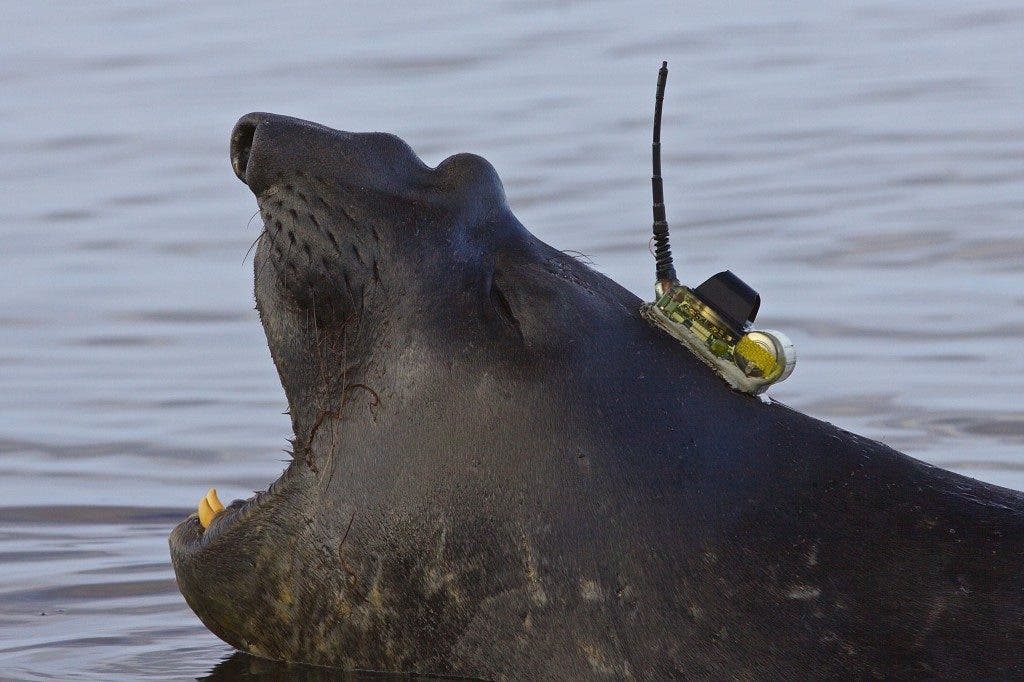Scientists using elephant seals to help with oceanic monitoring have shown that melting ice is affecting water circulation worldwide. The consequences are not known at the moment.

The impact climate change is having on global waters is far-reaching and complex. It’s not as simple as ‘heat melts ice and water levels rise’ – there are massive and non-intuitive repercussions both on a regional and global scale. In particular, one of the big things that are rarely talked about is Antarctic bottom water.
“Antarctic bottom water (AABW) production is vital to the Earth’s climate system and biogeochemical cycles,” researchers write in the new paper. “AABW results from the downslope transport of cold dense shelf water (DSW) mixing with ambient water masses on the continental slope.”
The two big drivers of ocean circulation are temperature and salinity – this is why the ocean circulation is also called the thermohaline circulation (thermo = temperature, haline = salt content). Both temperature and salt content affect water density, and differences in density cause movement and currents. Hot water has a lower density, as does fresh water. Hot water tends to rise up, while cold water drops down, creating lasting currents.
Point in case, the seas around Antarctica freeze during the winter, creating an area which is frozen or barely liquid. Cold water is really heavy and sinks fast, driving global circulation from Antarctica. The majority of these very dense waters form in Antarctica, in polynya systems – areas of open water surrounded by sea ice. A few such key areas play a massive role in ocean circulation, yet data is scarce in these areas, particularly during the winter months when human access to the region is impossible. It’s so scarce that some scientists have consistently questioned the importance of these bottom waters.

With this in mind, Guy Williams and colleagues from the University of Tasmania enlisted the help of local elephant seals. They equipped the seals with small instruments collecting vital information about the temperature and salinity in an area called the Prydz Bay region. The information not only supported the importance of these waters in global currents but also that the density is significantly reduced through the input of freshwaters sourced from the melting of local ice shelves. To put it simply, it goes like this:
- increasing global warming melts more freshwater ice ->
- freshwater mixes with Antarctic bottom water ->
- freshwater has a lower density, and reduces the overall density of the bottom water ->
- with reduced density the bottom water doesn’t sink so quickly and strongly, reducing the strength of the oceanic currents.
Researchers conclude:
“This study highlights the susceptibility of Antarctic bottom water to increased freshwater input from the enhanced melting of ice shelves, and ultimately the potential collapse of Antarctic bottom water formation in a warming climate.”
The ‘increased freshwater input [..] from ice shelves’ alludes to global warming. In an email to ZME Science, lead researcher Guy Williams explained how rising temperatures fit into this picture:
“The significance of global warming in this picture is that any increase in the oceanic heat input to the ice sheet margin, through direct warming of the waters moving beneath the ice shelves, or changes to the dynamic processes that drive this circulation, e.g. strengthening of the easterly wind regime around Antarctica that is believed to be crucial to the transport of warm offshore waters onto the continental shelf region.”
“This in turn has important ramifications for the global thermohaline circulation, as any decrease in AABW production will weaken its capacity to move heat around the world and the transport of nutrients and atmospheric gases to the deep layer of the ocean.”
It’s not intuitive, but climate change might really be slowing down oceanic circulation. It’s quite likely that this has many other implications we’re not yet grasping yet.
Journal Reference: The suppression of Antarctic Bottom Water formation by melting ice shelves in Prydz Bay. DOI
10.1038/ncomms12577






